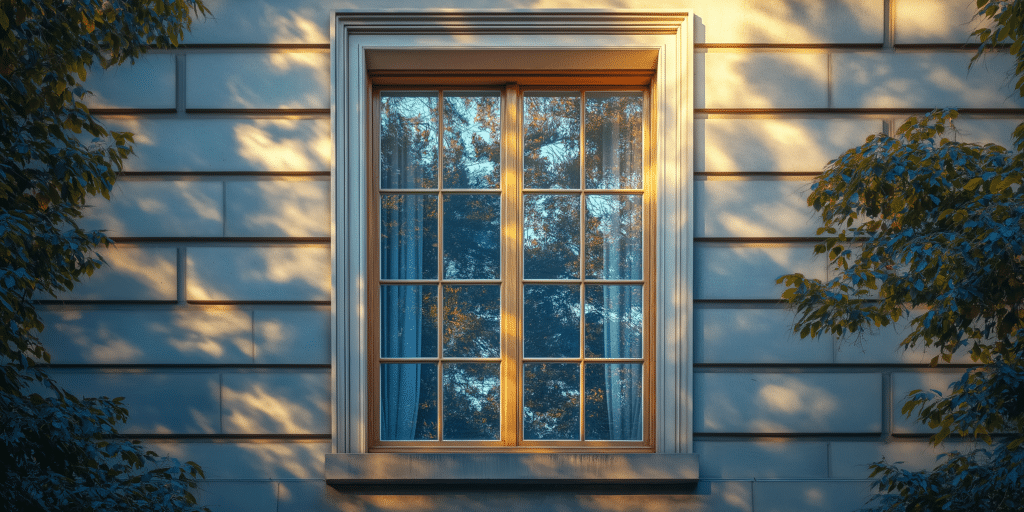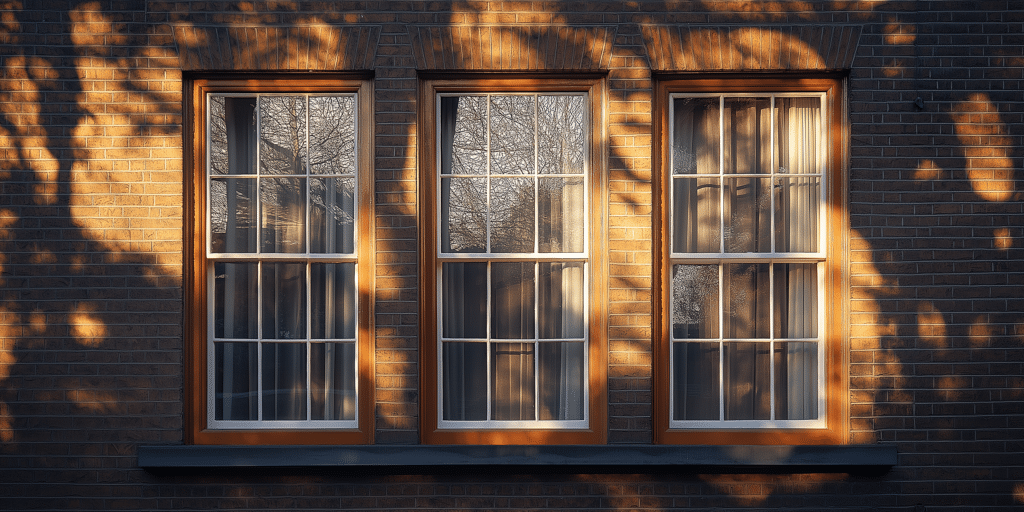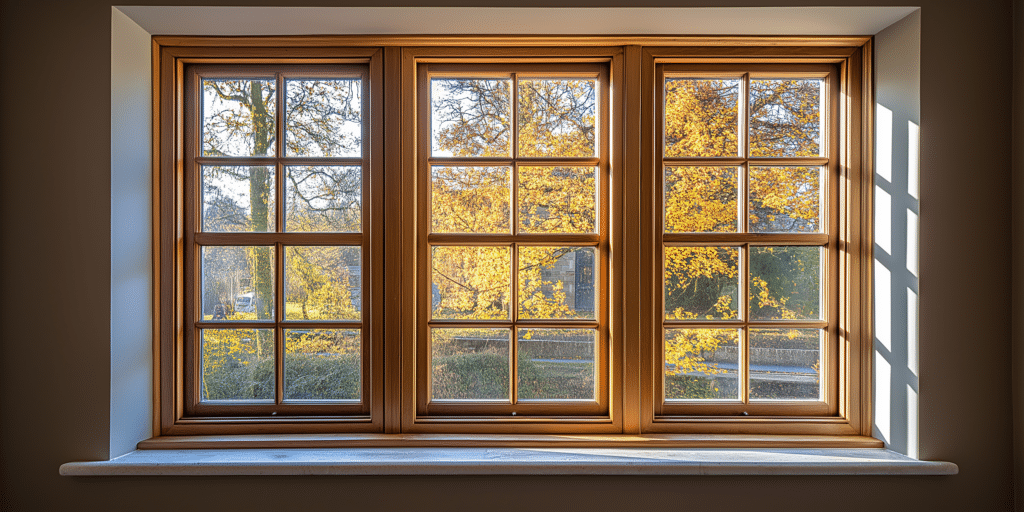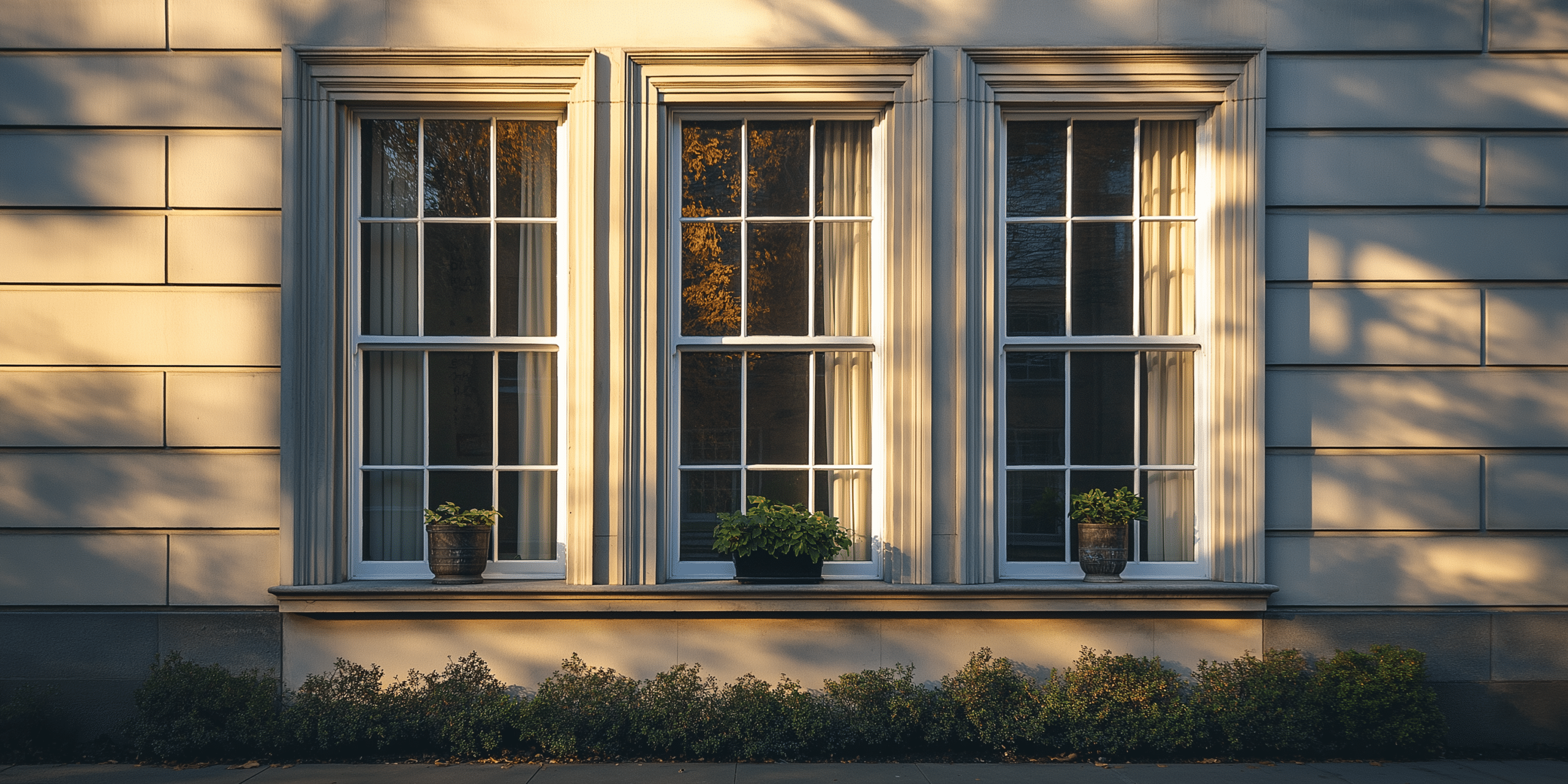Introduction to Sash Windows Flush Fitting

Sash windows have long been a staple in architectural design, offering both aesthetic appeal and functional benefits. But what exactly is the significance of flush fitting in sash windows? Flush fitting refers to the precise alignment of window frames with the wall or other architectural elements, creating a sleek and seamless appearance. This concept is especially important as it not only enhances the visual appeal but also improves the structural integrity and energy efficiency of the windows.
Flush fitting enhances both the aesthetics and functionality of sash windows. It ensures that the windows sit perfectly within the frame, reducing gaps and improving insulation. This not only boosts energy efficiency but also contributes to the overall visual appeal of the building. Furthermore, flush fitting can significantly improve security by eliminating potential entry points. As one expert notes, “Modern flush sash windows are designed with advanced security features, including multipoint locks and reinforced frames, making them far more secure than their traditional timber counterparts.
Who Prefers Flush Fitting?
Homeowners and architects who value a clean, modern look often opt for flush-fitting sash windows. This style is particularly popular in both contemporary designs and the restoration of historic buildings, where maintaining architectural integrity is paramount. Flush sash windows replicate the timeless look of traditional wooden frames while providing modern benefits, making them a top choice for those who seek both authenticity and innovation in their home design.
Understanding the Concept of Flush Fitting
Flush fitting in the context of sash windows involves aligning the window frame perfectly with the external facade. This method contrasts with other fitting techniques where the window might protrude or recess from the wall. By ensuring that the window is level with the surrounding surface, flush fitting creates a streamlined and aesthetically pleasing appearance, which is particularly desirable in both modern and traditional sash windows.
Unlike other methods, flush fitting ensures a streamlined appearance that blends seamlessly with the building’s exterior. This approach is particularly important for modern and traditional sash windows, where maintaining a uniform look is crucial. Moreover, flush fitting contributes to better thermal performance, as evidenced by the use of low-emissivity glazing in these windows, which “significantly improves a home’s thermal performance by reducing heat loss.
Flush fitting is vital because it enhances the window’s visual appeal and functional performance. The flush alignment helps reduce drafts and improve overall energy efficiency, which is a significant consideration in today’s environmentally conscious design landscape. This method also supports the window’s structural integrity, reducing the risk of damage over time.
By eliminating protrusions, flush fitting contributes to a minimalist and refined design. This is especially beneficial in both contemporary architecture and the restoration of period properties, where the goal is often to preserve or enhance the original aesthetic. As one case study demonstrates, “Flush-fitting sash windows have performed well in various environments, from coastal areas prone to high winds to urban settings where energy efficiency is a priority.”
Materials Used in Flush Fitting Sash Windows
When it comes to flush-fitting sash windows, materials such as timber, uPVC, and aluminium are most commonly used. Timber, for instance, offers a traditional look and is often chosen for heritage properties. On the other hand, uPVC is lauded for its low maintenance and energy efficiency. One manufacturer notes, “Our flush sash windows are available in a variety of finishes, including wood grain effects and a wide range of colours,” allowing for both traditional and modern aesthetics.
The choice of material directly affects the durability and performance of flush fittings. For example, uPVC is known for its low maintenance and energy efficiency, while aluminium offers strength and longevity. Timber, though requiring more upkeep, provides unparalleled aesthetic appeal. Additionally, the quality of the material impacts the long-term durability and resistance to environmental factors.
Different materials also have varying environmental impacts. Timber, when sourced sustainably, is environmentally friendly, while uPVC and aluminium have different carbon footprints influenced by their production processes. Environmental considerations are becoming increasingly important as more homeowners seek eco-friendly building solutions.
Material selection also plays a crucial role in the cost of flush-fitting sash windows. Timber tends to be more expensive due to its craftsmanship requirements, while uPVC and aluminium are generally more cost-effective, offering different price points to suit various budgets. The choice of material can also affect the long-term costs associated with maintenance and energy efficiency.
Installation Process of Flush Fitting Sash Windows

Installing flush-fitting sash windows involves several precise steps, starting with the preparation of the opening, followed by the careful placement of the frame, and ending with the secure fitting of the sash. This process is meticulous and requires a high level of skill to ensure the window sits perfectly flush with the external facade. The use of specialised tools, such as laser levels, is essential to achieve the desired result.
The installation process for flush fittings is more meticulous compared to traditional methods. It requires precise measurements and a high level of craftsmanship to ensure the window sits perfectly flush with the external facade. One installer explains, “Flush-fitting sash windows require a different approach, particularly in older buildings where the existing structure may not be perfectly aligned.”
Successful flush fitting installation demands specialised tools, such as laser levels and precision saws, along with the expertise of skilled tradespeople. This expertise ensures that the window is both aesthetically pleasing and functionally sound. The importance of using the right tools and techniques cannot be overstated, as even minor deviations can affect the overall performance and appearance of the windows.
Homeowners can ensure their sash windows are installed with proper flush fitting by hiring certified professionals with experience in this specific method. Additionally, it’s advisable to request references or view past projects to confirm the installer’s proficiency. As one expert recommends, “Always check the qualifications and experience of the installer to avoid potential issues down the line.”
Benefits of Flush Fitting in Sash Windows
- Flush fitting significantly improves the energy efficiency of sash windows by reducing drafts and enhancing insulation. This is particularly important in maintaining a consistent indoor temperature, leading to lower energy bills. The use of low-emissivity glass, which “reduces heat loss and reflects heat back into the home,” further enhances the energy-saving benefits of flush-fitting windows.
- The aesthetic advantages of flush-fitting sash windows are evident in their clean lines and seamless integration with the building’s exterior. This results in a modern, refined look that enhances the overall architectural design. The versatility in design and finish options allows homeowners to tailor the appearance of their windows to match their specific preferences, contributing to both curb appeal and interior aesthetics.
- Flush fitting also contributes to enhanced security. By eliminating gaps between the window frame and the wall, it reduces the potential entry points for intruders, making it more difficult to force open the window. As a security expert notes, “The tight fit of flush sash windows is a key deterrent against break-ins, particularly when combined with modern locking mechanisms.
- In the long term, flush fitting offers numerous benefits, including increased property value, improved durability of the windows, and reduced maintenance costs. These factors make flush fitting a wise investment for homeowners looking to upgrade their windows. The long-lasting nature of these windows, particularly those made from high-quality materials, ensures that they continue to perform well and look great for many years.
Common Challenges in Flush Fitting Sash Windows
Common issues during the flush fitting process include misalignment, difficulty in achieving a perfect seal, and potential damage to surrounding structures. These challenges can be particularly pronounced in older buildings where walls may not be perfectly straight or aligned. However, with careful planning and the use of advanced installation techniques, these issues can be effectively managed.
Homeowners can overcome these challenges by ensuring proper planning and preparation before installation. This includes choosing the right materials, hiring skilled professionals, and conducting a thorough inspection of the existing structures. Preparation is key to a successful flush-fitting installation, especially in buildings with uneven or irregular walls.
The risks of improper flush fitting include reduced energy efficiency, compromised security, and potential structural damage. These risks can be mitigated by following best practices and using high-quality materials. Homeowners should also be aware that improper fitting can void warranties and lead to costly repairs.
The condition of existing structures can significantly impact the flush fitting process. Poorly maintained or damaged walls may require additional preparation and repair to ensure a successful installation. Addressing these issues beforehand can prevent delays and ensure the windows perform as intended.
Flush Fitting and Historical Sash Windows

Flush fitting can be adapted to historical sash window designs by carefully preserving the original aesthetics while incorporating modern functionality. This is often achieved through the use of specialised materials and techniques that respect the architectural integrity of the building. The goal is to enhance the performance of the windows without altering their historical character.
Fitting historical sash windows requires maintaining the building’s architectural integrity, matching the original materials, and adhering to conservation regulations. These challenges require a thoughtful approach and a deep understanding of both historical architecture and modern building practices.
Maintaining authenticity while implementing flush fitting involves using historically accurate materials and techniques. This ensures that the windows remain true to the building’s original design. For instance, using timber sourced from the same region as the original construction can help maintain the building’s historical authenticity.
Best practices for restoring historical sash windows with flush fittings include conducting a thorough assessment of the existing windows, using appropriate conservation materials, and employing skilled craftsmen who specialise in historical restorations. This approach ensures that the windows are not only functional but also in harmony with the historic fabric of the building.
Cost Considerations for Flush Fitting Sash Windows
Several factors, including the choice of materials, the complexity of the installation, and the size and style of the windows influence the cost of flush-fitting sash windows. High-quality materials like sustainably sourced timber or powder-coated aluminium can significantly increase costs, but they also offer better longevity and performance.
A 2023 survey by Homebuilding & Renovating found that flush-fitting timber sash windows could cost up to 25% more than traditional fitting methods, especially when bespoke designs are involved.
Flush fitting typically incurs a higher cost compared to other window fitting methods due to the precision required and the quality of materials used. However, the long-term benefits, such as improved energy efficiency and increased property value, often justify the initial investment.
What Are the Long-Term Financial Benefits?
Long-term financial benefits of flush fitting include reduced energy costs, lower maintenance expenses, and increased property value, making it a cost-effective solution in the long run. Homes with well-fitted, energy-efficient windows could see a reduction of up to 15% in heating costs.
Homeowners can budget for flush-fitting sash windows by obtaining multiple quotes, considering financing options, and prioritising the most critical areas for window upgrades. When calculating the return on investment, it’s also wise to factor in potential long-term savings on energy bills and maintenance.
Maintenance of Flush Fitting Sash Windows
- Maintaining flush-fitting sash windows involves regular inspections, cleaning, and timely repairs. This helps preserve their appearance and functionality over time. For example, timber windows may require periodic repainting or varnishing, while uPVC and aluminium require less frequent maintenance.
- Inspections should occur at least twice a year to identify any signs of wear and tear specific to flush fittings, such as seal degradation or misalignment. Catching these issues early can prevent more significant problems down the line.
- Signs of wear and tear in flush-fitting sash windows include difficulty in opening or closing, drafts, and visible gaps between the frame and the wall. Addressing these issues promptly can prevent further damage and extend the lifespan of the windows.
- The lifespan of flush-fitting sash windows can be prolonged by applying protective coatings, ensuring proper lubrication of moving parts, and addressing any minor repairs before they escalate. Regular maintenance, as recommended by manufacturers, is key to ensuring longevity.
Comparing Flush Fitting to Other Sash Window Installation Methods

Flush fitting offers distinct advantages over other sash window installation methods, such as enhanced aesthetics and improved energy efficiency. However, depending on the building’s requirements, it may not always be the best option. For example, proud fitting, where the window frame slightly protrudes, may be more suitable for certain architectural styles.
The unique advantages of flush fitting include its seamless appearance, improved security, and superior insulation. These factors make it an attractive choice for both modern and traditional properties. Flush-fitting windows are often preferred in minimalist designs where a clean, unbroken facade is desired.
Flush fitting might not be ideal in scenarios where the building’s structure cannot support the precision required or where a different aesthetic is desired, such as in some heritage properties where protruding windows are a key feature. Additionally, flush fitting may not be suitable for buildings with uneven or irregular facades.
Other fitting methods, such as recessed or proud fitting, may impact the overall performance of sash windows by affecting insulation, security, and visual appeal. Choosing the right method depends on the property’s specific needs. For instance, recessed fitting might offer better protection from the elements in windy or exposed locations.
Final Thoughts on Sash Windows Flush Fitting
Flush fitting is essential for anyone looking to achieve a modern, seamless aesthetic while also improving the functional performance of their sash windows. Its importance cannot be overstated in both new constructions and renovations. As architectural trends continue to favour minimalism and energy efficiency, flush-fitting sash windows are likely to remain a popular choice.
Key takeaways for homeowners considering flush-fitting sash windows include the need for careful planning, the selection of high-quality materials, and the importance of hiring experienced professionals. This approach ensures that the windows not only enhance the property’s appearance but also provide long-term benefits in terms of energy efficiency and security.
Flush fitting contributes significantly to property value by enhancing both the aesthetic appeal and the energy efficiency of the windows. This makes it a worthwhile investment for those looking to increase their home’s resale value. Research from The Royal Institution of Chartered Surveyors suggests that homes with energy-efficient windows, including flush-fitting sash windows, can see a property value increase of up to 10%.
Future trends in flush fitting may include the integration of smart technologies, advances in materials that further improve energy efficiency, and innovations that make the installation process even more precise and efficient. As the demand for sustainable building solutions grows, we can expect to see continued innovation in the materials and methods used for flush-fitting sash windows, making them even more attractive to homeowners and architects alike.




